I’m a film critic, fervent admirer of Christopher Nolan, Steven Spielberg, and sci-fi and psychological movie fanatic. Come strike up some conversations with me!
A television series based on Japanese history might not have piqued my interest, until I stumbled upon the news that Shōgun has broken records for the highest viewership on Hulu in the United States, boasting a Tomatometer score of 99% and an audience score of 93% on Rotten Tomatoes, along with an impressive 9.2 rating on IMDb. More importantly, it scored an 8.9 on Peliplat, a rarity in the world of television dramas.
The first scene of the first episode immediately captivated me. A massive sailing ship from traveling from England and the Netherlands battles through a storm, before reaching the shores of Japan with much difficulty; fishermen on the coast discover the unfamiliar vessel, drawing the attention of nearly a hundred fully armed soldiers.
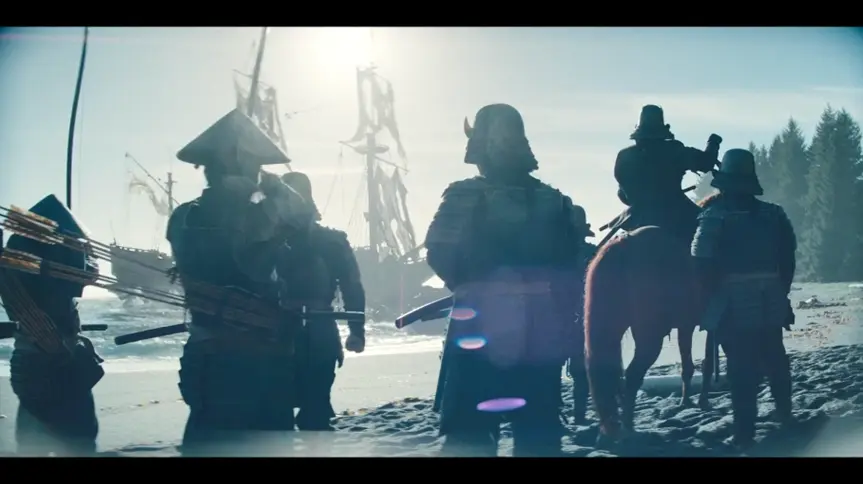
It felt like I was witnessing a clash of civilizations, as though a dramatic change was imminent in that era. The confrontation between advanced European firearms and Asian cold weapons reminded me of the harsh realities brought by the arrival of a Columbian fleet in the Americas. But why didn't the same happen in Japan?
In Shōgun, there's an intricate portrayal of Japanese imperial court life, intense conflictsand wars, but they merely scratch the surface. The film only showcases the visible political conflicts within Japan in the 16th century, but what truly fascinated me was the world beyond the country.
How did the Portuguese and the English have religious and economic influences on the Japanese imperial court after arriving in the country? Why were the Jesuits in Japan so fearful of the English? How did Spain and Portugal partition the world during that time? And how did England and the Netherlands craft the "Black Legend" to demonize Spanish rule and even the Spaniards themselves, and diminish Spain's achievements in the Age of Discovery? These questions continued to linger in my mind as I watched and I thought, "I must understand these issues first, or else I won't fully appreciate it."
I've compiled all the answers to the above questions here, and trust me, they won't spoil the series. In fact, knowing these background information will enhance your enjoyment of Shōgun! These details are not easy to come by, so please like and bookmark this article!
Original Novel and Historical Backgrouns
Shōgun is adapted from the bestselling same-titled novel by British author James Clavell, published in 1975. The story draws inspiration from the legendary experiences of English navigator William Adams, who set foot in Japan over four hundred years ago and became a confidant of Tokugawa Ieyasu, the third unifier of Japan. Ieyasu bestowed upon him the name "Anjin" (meaning "navigator"), which also serves as the title of the first episode,
However, in the novel, the characters are either given pseudonyms or entirely fictionalized. Adams becomes John Blackthorne, while Yoshi Toranaga, portrayed by Sanada Hiroyuki, actually represents Ieyasu. The adversary of Toranaga, Ishido Kazunari, corresponds to the opponent of Ieyasu, Ishida Mitsunari, and the deceased elder figure represents Toyotomi Hideyoshis
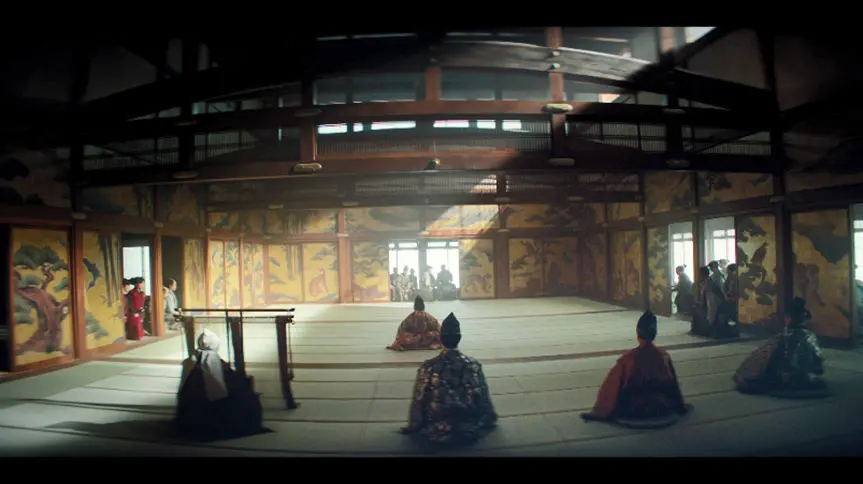 In the latter half of the first episode, the political landscape of Japan is depicted in a distinctly Japanese manner, delving into mysterious and intimidating customs such as "seppuku" and "ojigi", which are quite fascinating.
In the latter half of the first episode, the political landscape of Japan is depicted in a distinctly Japanese manner, delving into mysterious and intimidating customs such as "seppuku" and "ojigi", which are quite fascinating.
European Wars
The story of Shōgun is set in 1600, an era marked by the raging wars between the Netherlands and the Habsburg dynasty, which then ruled over Spain and Portugal. These wars are collectively known as the "Eighty Years' War," which continued until 1648. Meanwhile, England was under the reign of Queen Elizabeth I and engaged in conflicts with Spain. As they both had a common adversary, the Netherlands and England became allies, while the Habsburgs dominated nearly all of Europe, except for a few other major powers.
As the earliest countries to initiate long-distance exploration, Portugal and Spain divided the world through the Treaty of Tordesillas in 1494. Asia, the Indian Ocean, and Brazil were assigned to Portugal, while the Americas fell under Spanish rule. In the East Asian waters, Portugal controlled Macau and held trade and missionary rights in Japan, while Spain dominated Manila.
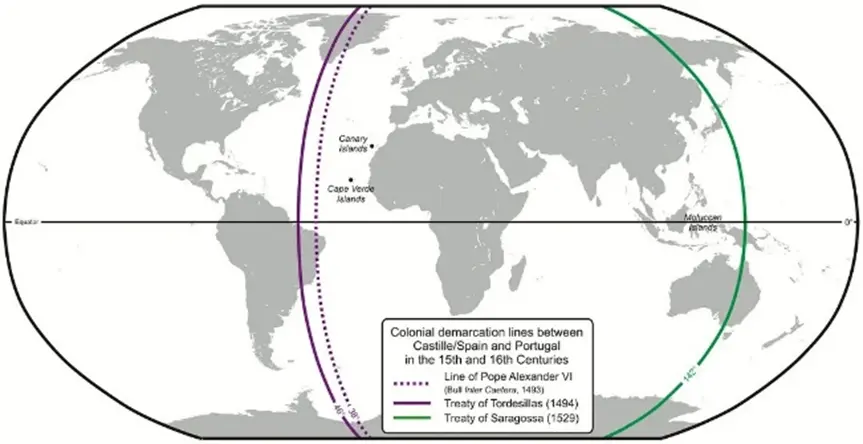
The above image depicts people's understanding of world geography in that era. The Treaty of Tordesillas divided the world into two portions, and in the second episode of Shōgun, it is also featured in the map drawn by Blackthorne for Toranaga.
Britain and the Netherlands began attempting to challenge the colonial empires and maritime dominance of Spain and Portugal. Their strengths were relatively weaker, so they resorted to unconventional methods, such as privateering or piracy, to attack Spanish galleons. The British and Dutch governments issued letters of marque to individuals, granting them the right to trade, plunder, and obtain the majority of profits. Sir Francis Drake, a renowned figure in British history, was engaged in this profession. During his circumnavigation, he plundered Spanish colonies and merchant ships along the way. Because of this, the Spanish and Portuguese showed no mercy to Dutch and British privateers; once caught, they would face execution.
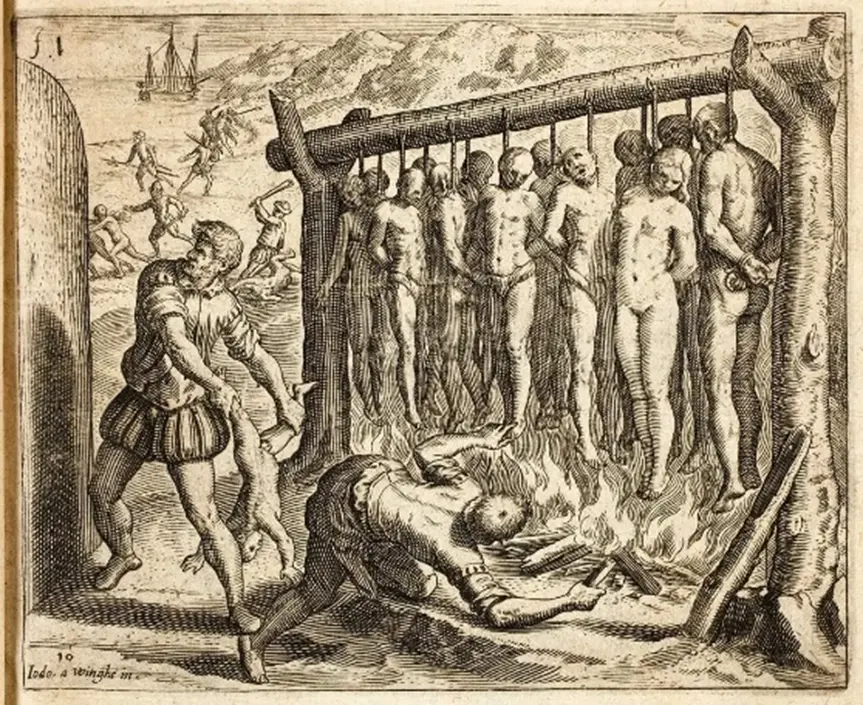
Simply put, during that time, Europe itself was embroiled in wars dominated by nationalism. This also explains why in the drama, the Portuguese in Japan are so intent on executing the English upon their arrival; that is why Blackthorne harbors intense hatred toward the Portuguese.
Confidential Nautical Charts
After Ferdinand Magellan's circumnavigation, the route to Asia via the southernmost tip of the Americas (Cape Horn or the Strait of Magellan) was considered a secret by the Spaniards.
At some point in the late 16th century, the English seized Spanish sea charts during warfare, allowing Drake to cross through South America to the Pacific Ocean. In actual history, Adams served under Drake and participated as a captain in the battle against the Spanish Armada in 1588, which was likely when he gained access to Spanish secrets.
In short, the English and the Dutch obtained confidential sea charts from the Spanish. In 1598, a company in Rotterdam (a precursor to the Dutch East India Company, which was established four years later) organized an expedition. Adams was hired as the chief navigator of the fleet. It had intended to try its luck and pass through the Strait of Magellan to get to the Chilean coast, but it inadvertently ended up in Japan.
This marks the opening scene of the first episode of Shōgun.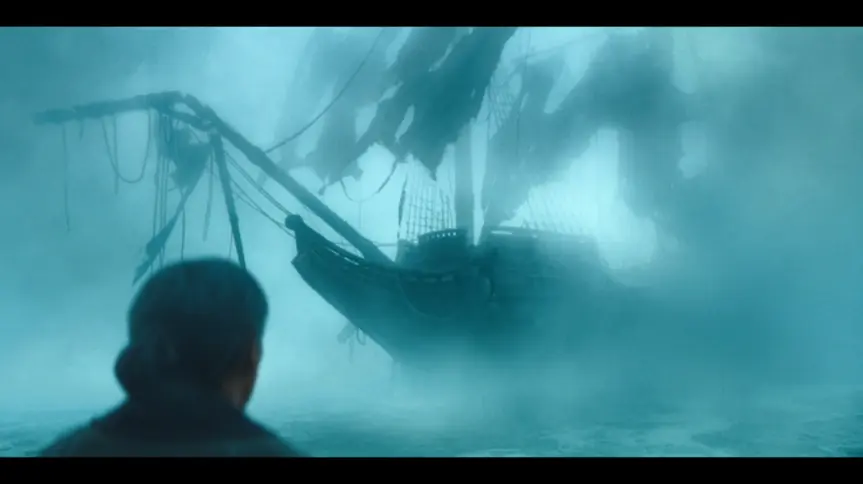
Battle of Faith
Although Europe experienced the Renaissance, it was still a region dominated by religion. Protestants and Catholics viewed each other as heresies, and religious persecution and bloody religious wars abounded in Europe, and also spilled over into Japan.
In 1549, Saint Francis Xavier landed in Kagoshima in southern Japan, becoming the first missionary to set foot on Japanese soil. As a redemptive religion, Christianity was attractive during the tumultuous war times in Japan. Japan's diverse religious and Shinto backgrounds were also conducive to the spread of Christianity. At the time indicated in the drama, there were about 200,000 Christians in Japan, with 15 daimyos baptized.
Therefore, in Shōgun, when Blackthorne, a protestant, arrives in Japan, he finds that many locals are already adherents of Catholicism, who are referred to as Jesuits in the series. Naturally, he suspects the Portuguese of harboring the ambition to control Japan.
In fact, at that time, Jesuits were not an overpowering foreign force in Japan but were walking a tightrope between various factions. Their sponsors, the Portuguese empire, no longer existed, and they had abandoned attempts to arm themselves ten years prior, and avoided garnering military support for proselytization. The Jesuits' strategy was to win over the elite, adhere to local customs and laws and reconcile Christianity with local cultures.
These are some historical facts related to Shōgun that I've found. I discovered that understanding these details made the entire story more coherent. Beyond just the action-packed scenes, I felt the weight of history.
Catch you later for more movie musings!


 Log in
Log in

No comments yet,
be the first one to comment!